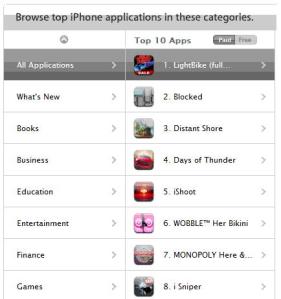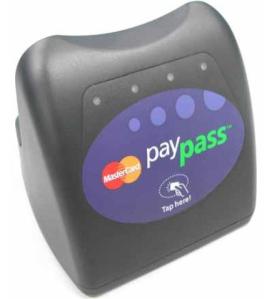Mobile Banking: Fact or Fiction?

I don’t have to go into all the virtues of smart phones like the iPhone and the G1. What I do want to go into is how these phones might affect banking. In many ways, smart phones and the financial software that they support have already made a significant impact on millions of bank customers. Celent estimates that 4.6 million households used some form of mobile banking in 2008. A recent study by Monitise indicates that 77% of Americans want real time, always on, access to their banking information. Clearly, Americans are starting to warm to – maybe even demand – mobile banking.
It doesn’t take much imagination to see how mobile phones can improve the way we manage money and make payments: pay friends for lunch with your phone, buy a Slurpee by waiving your phone at the register, use your phone to pay bills while standing in line at the DMV, check balances and transfer funds with your phone while deciding whether or not to buy your new Snugie, or receive text messages to alert you of new transactions on your account. All of these are already possible and some (checking balances, making transfers, paying bills, and receiving alerts) are already used by millions of people.
Despite the promise, there are those who suggest that in the face of hard times, banks should table their mobile initiatives. 4.6 million is a big number, but not that big if you consider there are over 277 million cell subscribers in North America. The US lags behind many other countries in our adoption of mobile banking. This leads me to my next point: Haven’t we been here before? Didn’t customers already tell us they are not interested in mobile banking?
Banks tried mobile payments earlier this decade and then jettisoned them after little or no customer participation. But, I think it’s pretty clear that the current movement towards mobile banking is different and will end up being at least as popular as online banking is today. According to ABI research mobile banking is slated to grow to 32 million users by 2013. For several reasons, mobile banking in 2009 is significantly different than years past.
Improved Phone Technology
The number one driver of mobile adoption is most likely the rapid sophistication of phones. The processing power of the iphone is comparable to that of the computing systems we were using at the beginning of this decade. Mobile phones in the mold of the Palm Pre, G1, iPhone and Blackberry present users with a myriad of features that go well beyond the functionality of other phones.
Smart phones have browsers that really work: My old blackberry had a web browser that supposedly let you browse the web. I rarely used it to browse the web because it took way to long to load pages. When they finally did load, I spent way to much time trying to decipher what I was looking at. New smart phones (including newer Blackberry’s) don’t have that problem. They use sophisticated browsers that render the web quickly and in a similar fashion to that of regular PC browsers. Thus smart phone users are able to browse the very same web sites they can browse on their computers at home. This includes banking sites. Even if an iPhone user’s bank does not have a mobile specific site, chances are they are already browsing their bank’s regular online banking site with their phones.

Smart phones have high resolution screens and keyboards: A large high resolution screen combined with a keyboard makes it much easier to serve up rewarding and productive user experiences. The other day I was sitting on my couch watching TV when I had the urge to check the latest basketball scores. I could have flipped to ESPN, but I would have had to wait until the scores I was interested in scrolled by. My next choice was between the computer in the other room or my phone sitting in my pocket. I chose the phone. It is easier to bring up espn.com and find scores on my phone than it is to walk into the next room and pull them up on the computer.
Phone technology continues to improve. The next generation of smart phones are bound to be even more conducive to mobile banking than their predecessors.
Evolving Mobile Networks
Recent upgrades to mobile operator’s networks and policies have made it much easier to bank on your phone.
Increased Capacity: 3G networks allow customers to surf the internet at broadband speeds. Each month, over 6.5 Americans access some form of video content on their phone. Increased network capacity enables quick real time access to customer financial information. The speed, availability, and quantity of financial data delivered via a mobile device improves with data capacity.
Open Networks: Up until recently, most mobile providers ran a pretty tight ship when it came to the devices and data they allowed on their networks. However, there seems to be growing support to open those networks up to alternative devices and third party application developers. In 2007 Verizon Wireless announced that “it will open up its nationwide network to mobile devices, software, and applications not offered by the carrier.” Open networks are important to the success of a variety of mobile finance services; particularly point of sale payments. Leslie Berlin of the NY Times writes that implementing mobile payments, particularly point of sale payments, in the US is difficult because it requires multiple companies to cooperate. Open networks, combined with smart phones, diminishes the need for banks to form partnerships with the major mobile providers.
Proliferation of New Payment Options

Contactless Payments: Instead of swiping to pay, contactless devices (cards, phones ..etc) afford you the ability to wave or tap and pay. Despite the obvious increase in happiness you will experience from tapping instead of swiping, tap to pay has yet to take off in the US. Mastercard has had the Paypass contactless payment system up and running for quite a while. You can use your contactless cards at 7-eleven stores and even New York taxi cabs. Several banks issue contactless enabled cards. Yet, adoption remains low.
Despite its slow start, I believe contactless adoption is primed for take off thanks to the proliferation of non-payment related contactless applications. Contactless devices are being used to restrict access to computer terminals, ticketing systems (mass transit ticketing), and send blood pressure results via text message to your phone. Contactless devices are even being used to gain access to shared rental cars. As people become more familiar with contactless applications, they will be more open to using their mobile phones as a contactless payment device.
Contactless payment devices are also taking on new forms. First Data’s Go Tags were distributed to attendees of the Democratic National Convention in Denver. The tags were provided in the form of a button that you could tap at various retailers to receive free snacks and drinks. GoTags can also be distributed as stickers that can be placed on the back of your mobile phone. In 2008 First Data published a survey taken from 2,700 consumers ages 18 and over. They found that 65% of those surveyed were interested in learning more about using contactless stickers to make payments. 60% of those interested indicated a likelihood of using contactless stickers at least once a week.
Alternative Forms Payments: It seems like a new alternative payments company pops up once a week. Maybe I will write about all of them and their respective business models another day. The point of talking about it here is that I think these alternative payment systems might end up driving adoption of mobile banking.
P2P (person to person) payments are potentialy the gasoline to the rising mobile banking flame. The draw back to many mobile P2P services (e.g. PayPal) is that many times they are competing with cash transactions. Exchanging cash is free. Exchanging funds with PayPal is not. PayPal, and many other services charge fees to the recipient or sender. Many of the companies touting new payment methods are aiming to reduce those fees and push their service to the masses. If they succeed, mobile P2P payments may become pervasive and mobile banking usage will explode.
So what about 2009?
I certainly believe that mobile banking will soon be as – if not more – popular than online banking. Mobile banking popularity is a good thing for banks. I believe they will be able to eventually be able generate new fees from mobile banking customers. This year, solid mobile banking products will succeed in driving new deposits and improving retention. That said, the absence of mobile banking will probably not be a major catalyst for attrition at financial institutions – at least not until 2010 :).
[Originally published at themoneymashup.com]











